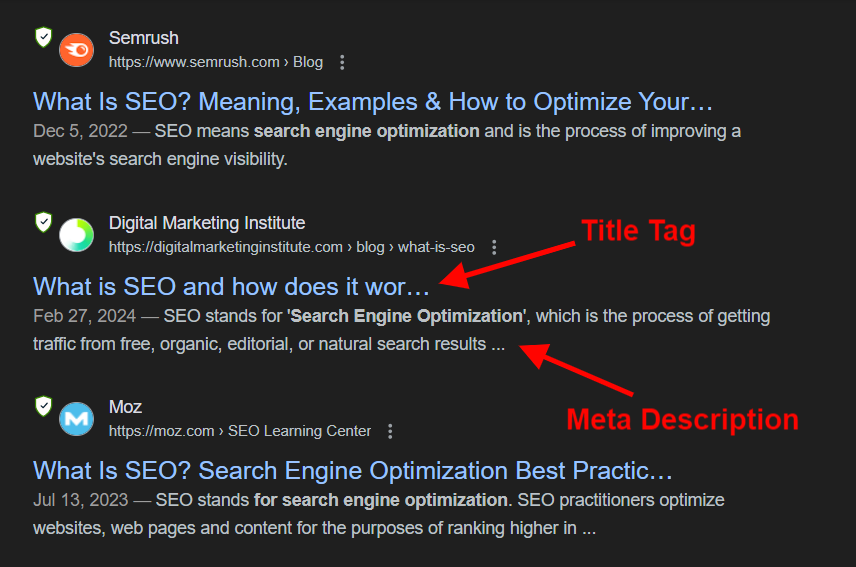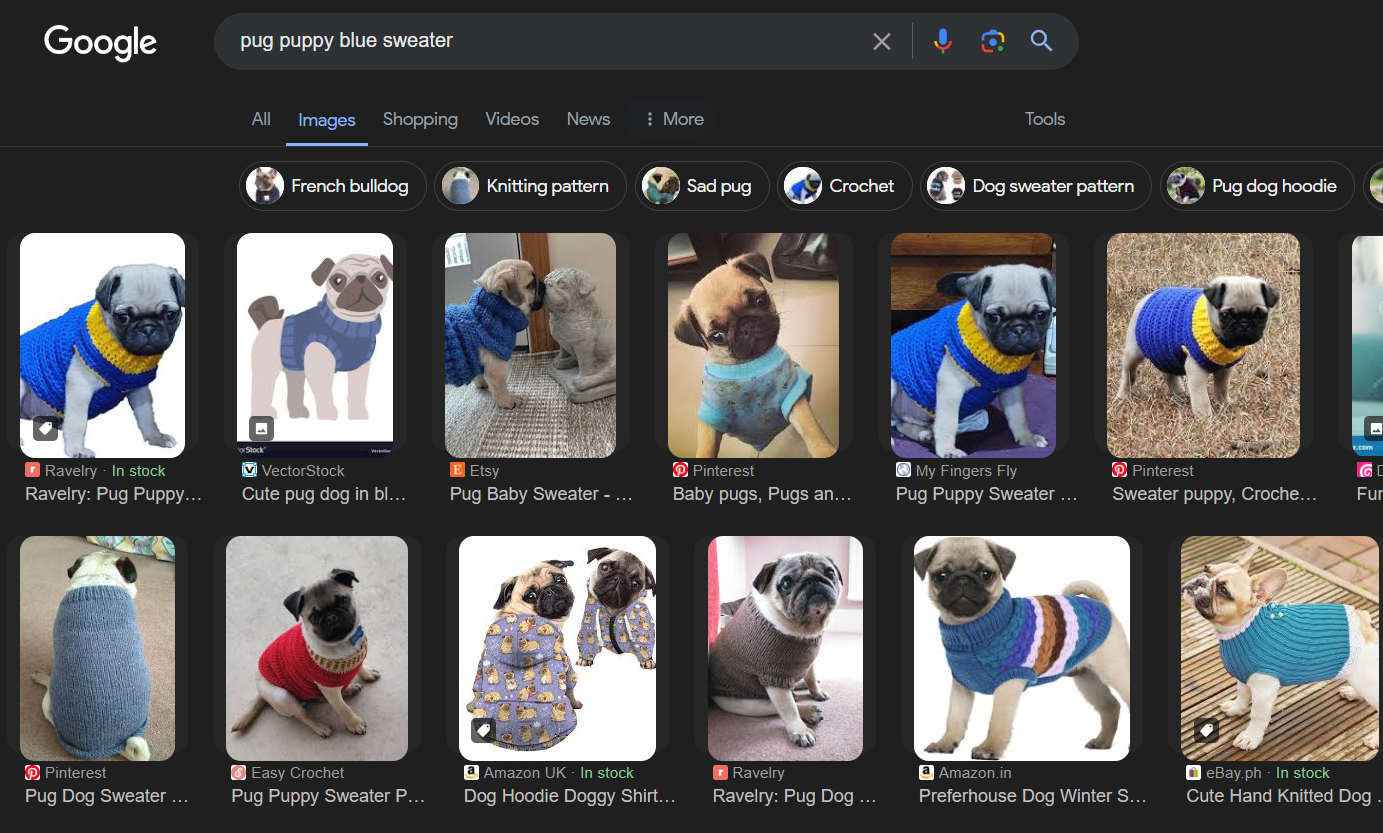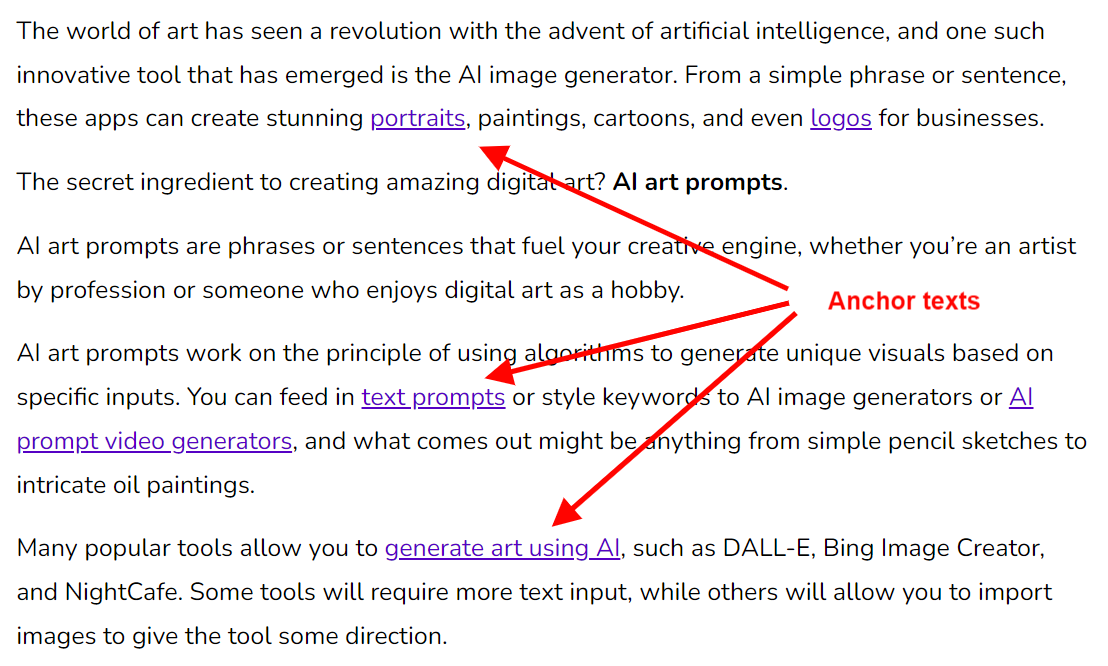Discover top guides, trends, tips and expertise from AIO Writers

Keyword placement is the unsung hero of SEO. You can have the most brilliant content in the world, but if you’re not strategically placing your keywords, you might as well be shouting into the void. But do you know where to place keywords for SEO impact?
Let’s dive into the nitty-gritty of where to put those precious keywords for maximum visibility.
But hold up, before you start stuffing keywords like a Thanksgiving turkey, let’s talk about the right way to sprinkle those key terms throughout your content to propel your site to the top of the SERPs with minimal eye-rolls from your readers.
Table Of Contents:
- Why Keyword Placement is Important in SEO
- Where to Place Keywords for SEO
- How to Place Keywords in Title Tags and Meta Descriptions
- How to Place Keywords in Headings and Subheadings
- How to Place Keywords Throughout Your Content
- How to Place Keywords in Alt Text and File Names
- How to Place Keywords in Anchor Text
- Common Mistakes to Avoid in Keyword Placement
- FAQs: Where to Place Keywords for SEO
- Conclusion
Why Keyword Placement is Important in SEO
You’ve probably heard that incorporating keywords is crucial for search engine optimization (SEO). But do you know why?
It all comes down to how search engines work. They use complex algorithms to understand and rank content, and keywords play a big role in that process.
When you type a query into a search engine, it scans its index of web pages to find the most relevant results. One of the key factors it looks at is the presence of keywords.
By strategically placing keywords in important locations like meta titles, headings, and throughout the content, you’re essentially telling search engines what your page is about. This helps them match your content to relevant searches, boosting your visibility.
Benefits of Proper Keyword Placement
Getting your keyword placement right can lead to some pretty sweet benefits, like:
- Higher search engine rankings
- Increased organic traffic
- Better user engagement
- Improved relevance for your target audience
Search engines are constantly trying to match users with the most relevant content. By making your page’s main topics crystal clear, you increase the chances of it showing up in search results – and attracting more readers.
Where to Place Keywords for SEO
So, you’ve got your keywords ready to go. But where exactly should you put them?
Here are nine of the most important places where you should insert your keywords:
1. URL
The significance of a well-structured URL for SEO cannot be overstated. It’s the first hint to both search engines and users about the content of your page, making it an essential element in your SEO strategy.
Including relevant keywords in your URLs enhances their visibility and effectiveness, guiding users directly to the information they’re seeking.
2. Title and Meta Description
Your title tag and meta description are prime real estate for keywords. These elements show up in search results and give users (and search engines) a snapshot of what your page is about.
Make sure to include your primary keyword naturally in both the title and description. Make them compelling and descriptive to entice clicks.
3. Headings and Subheadings
Using keywords in your H1 heading and relevant H2, H3, and H4 subheadings is a great way to show search engines the structure and main topics of your content.
Plus, it makes your post easier to read and navigate for users. Win-win.
4. First Paragraph
I always try to include my primary keyword in the first paragraph of any piece of content. It helps search engines identify the main topic right away and shows readers they’re in the right place.
Aim to use the keyword naturally within the first 100-150 words for the best impact.
5. Throughout the Content
Sprinkle relevant keywords throughout the body of your post, but don’t overdo it. The goal is to use them naturally, not cram them in at every opportunity.
I like to use a mix of exact-match keywords, variations, and synonyms to keep things diverse and avoid keyword-stuffing penalties. Weave them in where it makes sense.
6. Image Alt Text
Want to give your website’s SEO a boost? Start by optimizing your images. Alt text is the perfect place to include relevant keywords that help search engines understand the content of your images. It’s a small change that can make a big difference in your search rankings.
Just make sure the alt text accurately describes the image and includes your target keyword naturally.
7. File Names
When it comes to boosting your website’s SEO, every little detail counts, including the file names of images and other files you upload. It might seem insignificant at first glance, but search engines do pay attention to file names as part of their indexing process.
By optimizing file names with relevant keywords, you can enhance your site’s visibility and improve its ranking on search engine results pages (SERPs).
8. Anchor Text
When building internal links, choosing the right anchor text is crucial. Anchor texts are clickable words or phrases that lead to another page on your website. Instead of relying solely on exact match keywords — which may appear spammy — opt for synonyms or related terms that naturally integrate into your content.
This approach enhances readability and avoids triggering any red flags with search engines regarding keyword stuffing.
9. Domain Name
Gone are the days when exact match domains (EMDs) could guarantee top spots on SERPs. Google’s algorithm updates have significantly reduced the effectiveness of this tactic. Websites like cheapbedspreads.com, hoping to capitalize on specific searches without providing substantial content or user experience, found themselves getting kicked in the rankings post-update.
This shift underscores Google’s commitment to quality and relevance over keyword manipulation. Therefore, stuffing your domain name with SEO keywords might make your site appear spammy, undermining trust and credibility among potential visitors.
Opt for a domain that reflects your brand or company name rather than overt keyword inclusion. This approach enhances brand recognition and fosters trust among users.
If you decide to include keywords, ensure they fit naturally within a broader branding context. For example, if you run a Greek restaurant named Ouzo, incorporating “Greek” into your domain can clarify your niche while maintaining brand identity (e.g., ouzogreekdining.com).
Remember that user experience trumps all else in today’s digital landscape so choose a memorable and easy-to-recall domain that resonates with users rather than confusing them with clunky keyword insertions.
For more expert tips, read our guide on how to choose a domain name for your blog.
How to Place Keywords in Title Tags and Meta Descriptions
Let’s dive a little deeper into two of the most important spots for keywords: your title tag and meta description.
Crafting an Effective Title Tag
Your title tag is like the headline of your page in search results. It’s your chance to grab attention and entice clicks.
To craft an effective title tag, keep it under 60 characters, include your primary keyword near the beginning, and make it compelling and relevant.
For example, instead of just “Keyword Placement Tips,” try something like: “10 Proven Keyword Placement Tips to Boost Your SEO”.


Writing a Compelling Meta Description
Your meta description is like a mini-ad for your web page. It appears right below your title in search results, giving you a chance to convince users that your content is worth their time.
The best meta descriptions are clear, concise, and compelling. They include the primary keyword naturally and give a taste of the value users will get from clicking through.
Aim for around 155 characters and use actionable language to encourage clicks.
Read our full guide on how to write an amazing meta description.
How to Place Keywords in Headings and Subheadings
Headings and subheadings aren’t just for making your content easier to read (although that’s definitely a perk). They’re also key places to include keywords for SEO.
H1 Heading
Your H1 is the main heading of your page, and it carries the most weight with search engines. Make sure to include your primary keyword here in a natural, descriptive way.
For example, if your main keyword is “keyword research,” your H1 could be something like: “The Ultimate Guide to Keyword Research for SEO”.
You only have one H1 per page so make it count.
H2 Subheadings
H2 subheadings are a great way to sprinkle in variations of your main keyword or related long-tail keywords. They make your content easier to read by breaking it up into bite-sized sections, and search engines love the extra context they provide about your page.
For instance, if you’re writing a post about “healthy breakfast recipes,” your H2s might include phrases like:
- “Quick and Easy Healthy Breakfast Ideas”
- “5 Nutritious Breakfast Recipes to Fuel Your Day”
- “The Benefits of a Healthy Breakfast Routine”
See how each H2 includes a variation of the main keyword while still being descriptive and enticing?
H3 and H4 Subheadings
H3s and H4s may not be the SEO superstars like H1s and H2s, but they still pack a punch. Use them wisely to break down your H2 sections into bite-sized, easily understandable chunks that keep readers engaged and coming back for more.
Under the “Quick and Easy Healthy Breakfast Ideas” H2, you could include H3s such as:
- “Overnight Oats Recipes”
- “Healthy Smoothie Recipes”
- “Avocado Toast Variations”
The key is to use keywords naturally within a hierarchy that makes sense for your content. Don’t force them where they don’t belong, but do look for opportunities to incorporate them strategically.
How to Place Keywords Throughout Your Content
When it comes to creating content that both your audience and search engines will love, it’s all about finding that sweet spot. You want to incorporate your relevant keywords naturally, while still keeping your content valuable and engaging.
I’ve found that the key is to focus on readability and flow first, and then weave in those keywords strategically. If you force them in where they don’t belong, not only will it turn off your readers, but search engines are smart enough to pick up on that too.
Maintain Readability and Flow
Your number one goal should be to create content that not only captures your target audience’s attention but also delivers real value. Imagine you’re sitting down for a chat with a buddy – use that same friendly, relatable language in your writing. Keep it easy to understand and follow, so your readers stay engaged from start to finish.
When I create content, my first step is to focus on crafting a message that’s both clear and captivating. Once I’ve got that down, I’ll review my work and find natural opportunities to weave in relevant keywords without interrupting the overall flow.
Use Variations and Synonyms
Here’s a pro tip: you don’t have to use the exact same keyword phrase every single time. In fact, using variations and synonyms of your relevant keywords can actually help you rank for a wider range of search queries.
For example, if your main keyword is “content marketing strategy,” you could also use phrases like “content marketing plan,” “content marketing approach,” or “content marketing tactics.”
This helps your content sound more natural while still optimizing for those important keywords.
Keyword Density Considerations
Now, I know you might be wondering, “How many times should I use a keyword in a piece of content?”
Well, there’s no magic number, but a good rule of thumb is to aim for around 1-2% keyword density.
This means that for every 1,000 words, your primary keyword should appear around 10 to 20 times.
But remember, forcing it can make your content sound robotic and spammy. Find the sweet spot between optimizing for search engines and delivering engaging, valuable content that keeps your readers coming back for more.
How to Place Keywords in Alt Text and File Names
When it comes to SEO, a lot of people focus solely on the text of their content. But did you know that optimizing your images can also give you a boost in search rankings?
Two of the most important places to include your relevant keywords are in your image alt text and file names.
Writing Descriptive Alt Text
Alt text, short for “alternative text,” is a written description of an image. It’s what appears if the image doesn’t load, and it’s also what screen readers use to describe images to visually impaired users.
But beyond accessibility, alt text is a great place to include your relevant keywords. When writing your alt text, aim to describe the image in a concise, yet descriptive way, naturally incorporating your keyword phrase if possible.
For example, instead of just using “dog” as your alt text, you could say something like “adorable pug puppy wearing a blue sweater.” This gives search engines more context about the image and can help it rank for related searches.
Naming Image Files Strategically
In addition to alt text, you can also strategically name your image files to include relevant keywords. Instead of using generic file names like “IMG_1234.jpg,” try naming your images something descriptive and keyword-rich, like “pug-puppy-blue-sweater.jpg.”


This not only helps search engines understand what the image is about but can also help your image show up in Google Image searches for those keywords. Just be sure to use hyphens between words instead of spaces, as search engines have an easier time reading them.
How to Place Keywords in Anchor Text
The anchor text, or the clickable text in a hyperlink, also plays a key role in telling search engines what the linked page is about. Here’s how to use it to your advantage.
Choosing Relevant Anchor Text
When linking to another page on your site, choose anchor text that accurately describes the content you’re linking to. If possible, try to naturally incorporate your relevant keyword phrases into the anchor text.
For example, if you’re linking to a blog post about the benefits of yoga, instead of using generic anchor text like “click here,” you could say something like “discover the amazing benefits of yoga for stress relief.”
This helps both users and search engines understand what they can expect to find on the linked page and can give that page a boost for those specific keywords.


Linking to Related Content
In addition to using keyword-rich anchor text, it’s important to link to content that’s truly relevant to the topic at hand.
Don’t just link for the sake of linking — make sure the linked page provides additional value and context for your readers.
Each link you create is another line drawn between related pages, forming a picture that both your readers and search engines can easily understand. So, the more strategic you are about linking your pages together, the clearer that picture becomes, and the easier it is for everyone to navigate your site’s depth and complexity.
Common Mistakes to Avoid in Keyword Placement
Want to boost your search rankings? Steer clear of these keyword blunders that even seasoned pros sometimes make.
- Keyword stuffing (cramming in keywords unnaturally)
- Overusing exact-match keywords
- Neglecting long-tail keywords
- Failing to use keywords in key on-page elements
For the best results, focus on creating content that’s easy to read and packed with value. While keywords are important, they shouldn’t overshadow the user experience. Keep it conversational, engaging, and above all, human.
In my experience, the sweet spot is using a mix of head keywords and long-tail phrases, placed naturally throughout the page. Focus on creating awesome, relevant content first, and let the keywords flow from there.
SEO is constantly changing — what works now might not be effective in the future. Keep an eye on your keyword performance in Google Analytics and don’t be afraid to try new things, – whether it’s targeting new keywords, experimenting with different types of content, or adjusting your internal linking strategy.
FAQs: Where to Place Keywords for SEO
Where do I put my SEO keywords?
Place your keywords in the SEO title and meta description, headers, and throughout your blog post’s content. Don’t forget image alt text and anchor texts for internal links.
Where should keywords be on a website?
Add keywords across site content including homepage, product pages, and blog posts. Ensure they appear in titles, descriptions, headers, and body text for better search engine optimization.
How do I organize my SEO keywords?
To organize your SEO strategy effectively use tools like Google Analytics to track performance. Group them by topic or relevance to ensure content stays relevant and valuable.
Where do I start with SEO keywords?
Search keywords by using tools like Google Keyword Planner. Focus on terms people are searching for related to your niche before creating content around those specific phrases.
Conclusion
So, there you have it – the inside scoop on where to place keywords for SEO. By strategically weaving your target phrases into your titles, meta descriptions, headers, anchor text, images, and content, you’ll be well on your way to climbing those search engine rankings.
Google’s algorithms may be powerful, but they’re not your only concern. Your content must resonate with your human readers, offering them useful information and an enjoyable reading experience. Strike that balance, and you’ll be a true content champion.

UNLOCK YOUR POTENTIAL
Long Headline that highlights Value Proposition of Lead Magnet
Grab a front row seat to our video masterclasses, interviews, case studies, tutorials, and guides.



